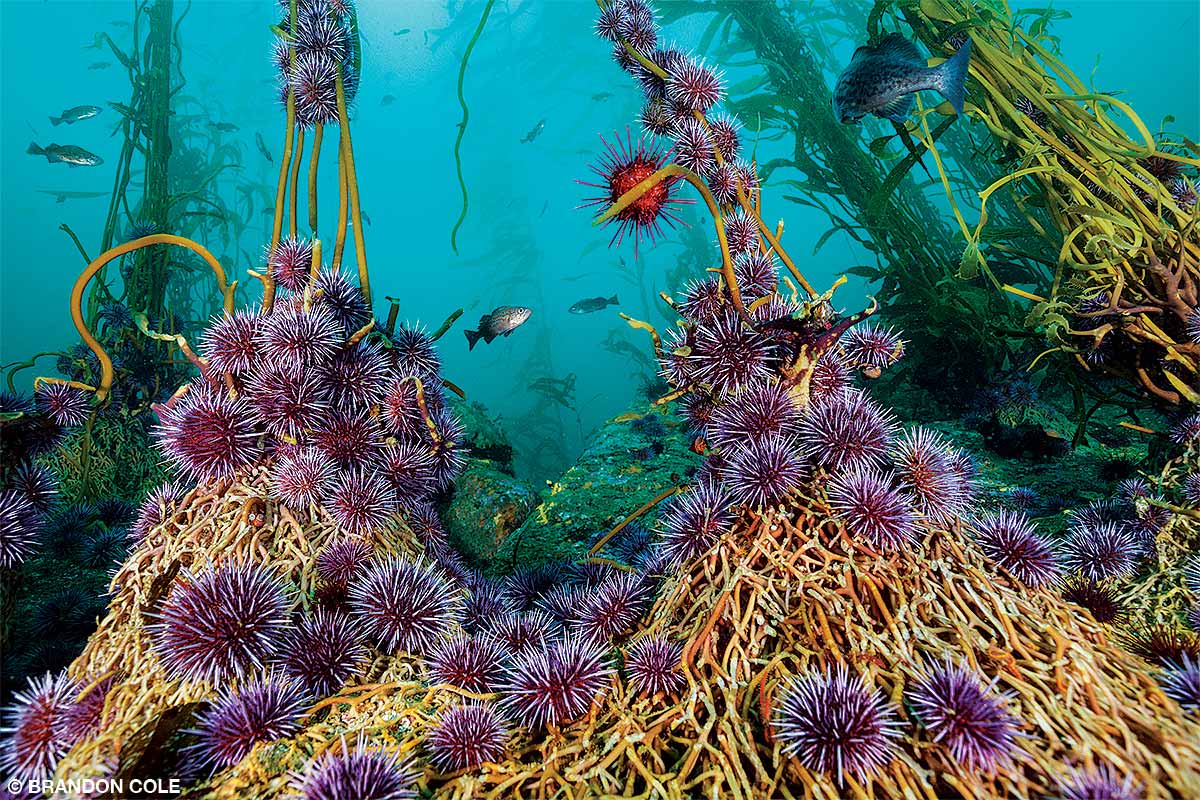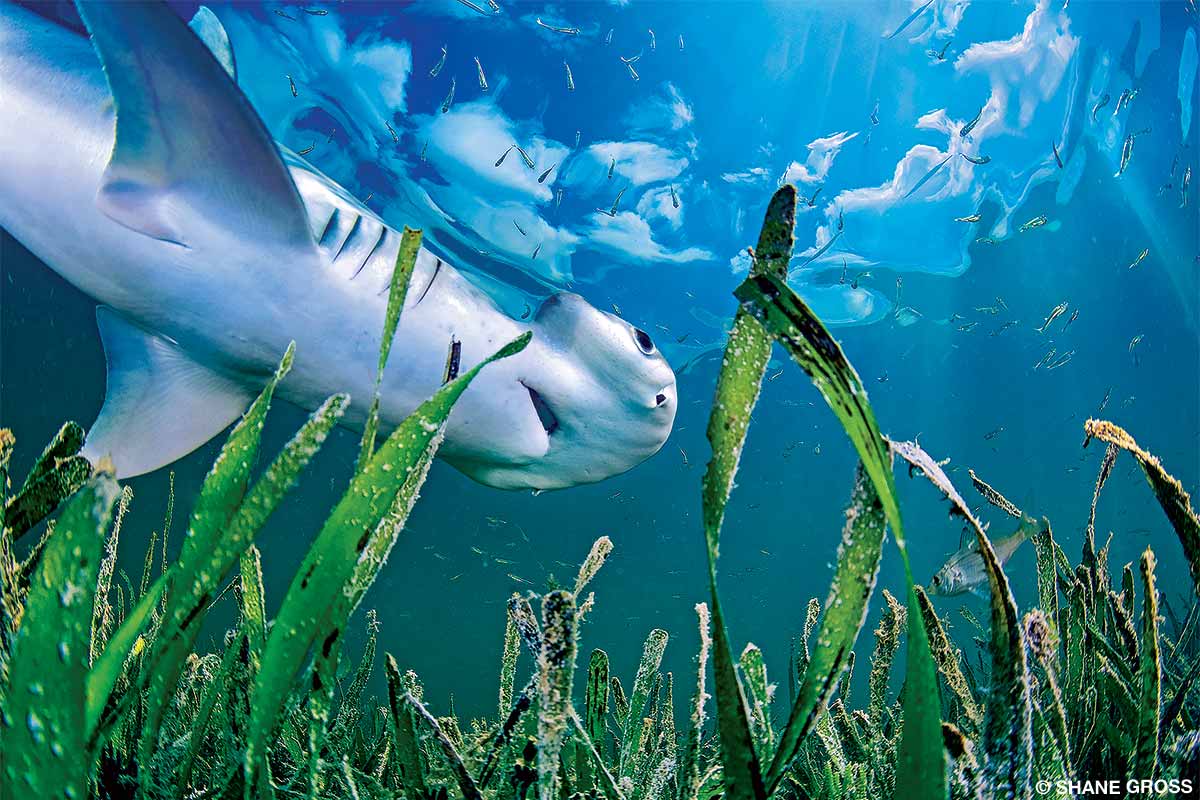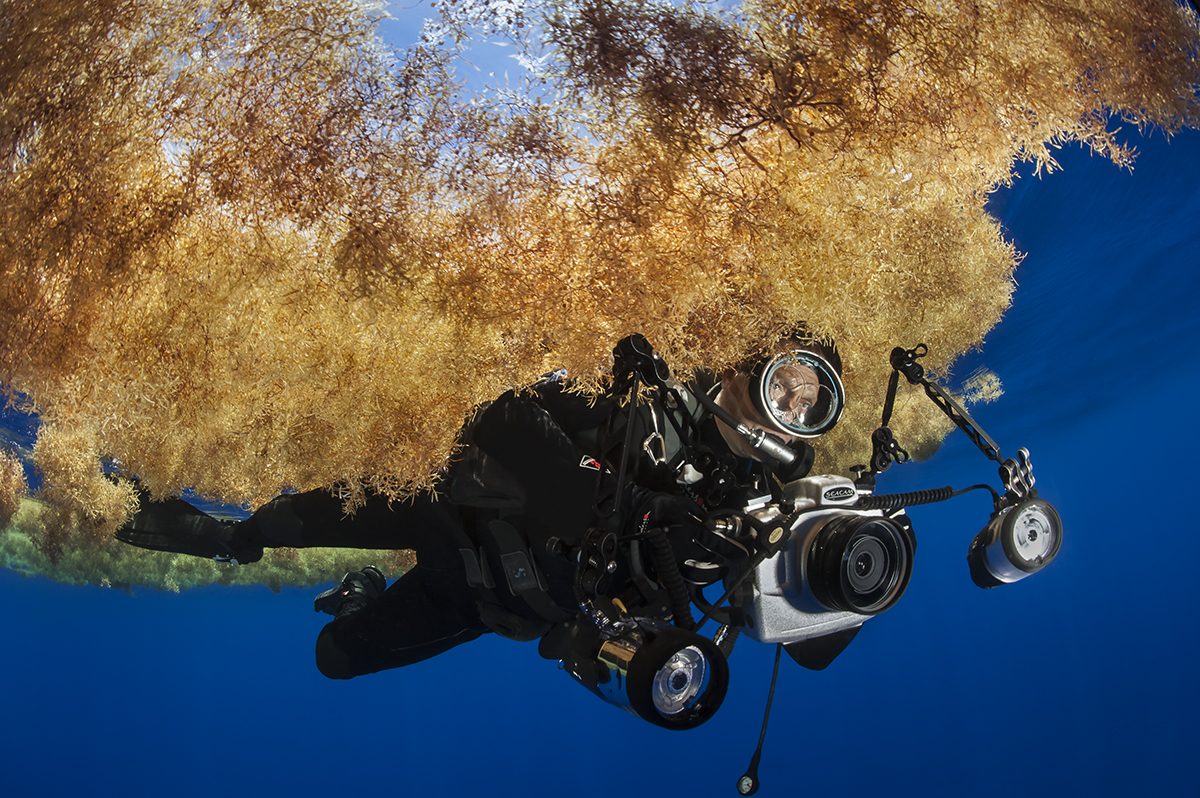For more than five years, divers and scientists along the U.S. West Coast have watched a disaster play out before their eyes. Sunflower sea stars fell victim to a wasting disease, which wiped out roughly 90 percent of the global population in 2013. Seven years later, scientists see no signs of recovery. Without the sea stars, the population of purple urchins that sea stars eat has exploded and mowed down entire forests of bull kelp. The West Coast experienced intense ocean warming from 2014 to 2017, and by 2015 divers began seeing urchin barrens — vast swaths covered in piles of spiny creatures and little else.
On ne saurait trop insister sur les avantages de la protection des herbiers marins. Les herbiers marins purifient l'eau, contribuent à la protection contre l'érosion côtière, aident à maintenir les pêcheries à petite échelle qui soutiennent les communautés, et augmentent les populations de poissons et la biodiversité. Elle séquestre beaucoup plus de carbone par surface que les forêts terrestres et réduit l'acidification des océans. Des herbiers marins en bonne santé sont synonymes d'un océan plus sain.
How many times have you noticed the line of weeds out of the corner of your eye and driven past, around, or through it without a second glance on your way to a dive? In our case, most of the time. On a calm day off Jupiter, Florida, a wide weed line at the edge […]
DESCENDING THE LIMESTONE STAIRS OF BONAIRE’S famous 1,000 Steps dive site in full scuba gear is challenging. It’s just 64 steps down, but it feels like many more. Once you make it down, you’re rewarded with a Caribbean reef teeming with life …
TALK TO ANY HUMAN UNDER THE AGE OF 13, and they have probably been asked, “What do you want to be when you grow up?” I was just 3 years old when I knew I wanted to be a veterinarian. Growing up on coasts — first Cape Cod, Massachusetts, and then Southeast Florida — I […]
IT’S NO SECRET THAT CARIBBEAN REEFS ARE IN CRISIS. Many stony coral species face an uncertain destiny, and some scientific predictors point toward extinction in the near future for some species.
Fin 2019, la National Oceanic and Atmospheric Administration (NOAA) et un ensemble de partenaires étatiques, fédéraux, universitaires et de praticiens de la restauration ont lancé Mission : Iconic Reefs (MIR), une initiative de restauration en deux phases, sur 20 ans, à l'échelle de l'écosystème des Florida Keys, qui se concentre sur la restauration de sept systèmes de récifs emblématiques de grande valeur.
CHARLES DARWIN’S FIVE WEEKS IN THE GALÁPAGOS Islands were crucial to the development of his theory of evolution, likely due to the Galápagos having the world’s second-highest proportion of endemic (unique to one location) species.
Les produits de la mer font depuis longtemps partie intégrante du régime alimentaire de l'homme et certains les considèrent comme une source de nourriture inépuisable.
MARITIME TRANSPORT HAS MORE TO DO WITH CORAL DISEASE than you might think. Just like most animals, corals can get diseases. Researchers first recognized coral disease in the early 1970s. It has increased over time and become a significant threat in many areas of the world.



